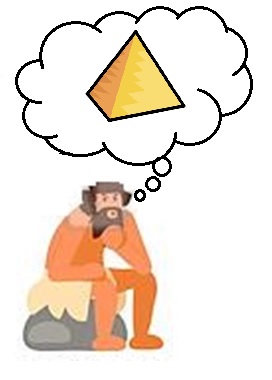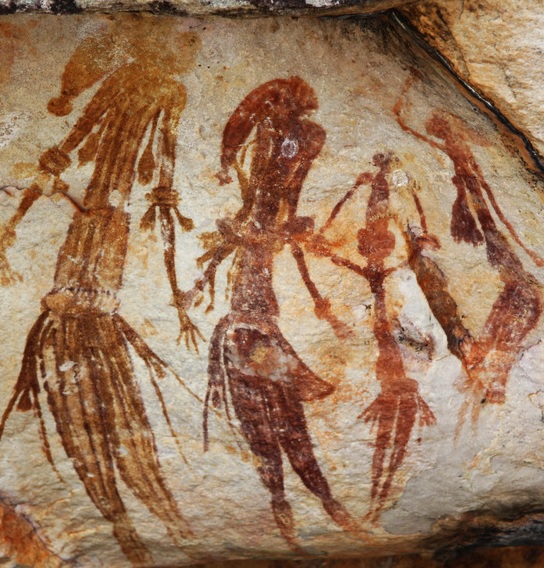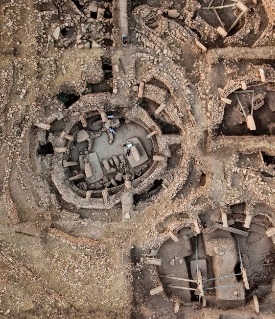
I’ve had a fair number of snarky, insulting, crude, demeaning, scatological, and condescending comments on my blog posts over the years. Meh. Hey, I can be pretty snarky myself, though I do my best to avoid the rest of those adjectives. But every so often, somebody who is leaning towards the fantasies of the archaeological alternos asks some good, honest questions, in a sincere effort to see both sides, and those questions are golden. This happened some time back, and I promised the questioner a whole article in reply. Alas, life intervened in ways that were both good and bad, and I’m only just clawing my way back onto a keyboard. Anyway, dear Scott, this is me keeping my promise at long last.
Question: If you consider the fact that modern humans as we know them have been around for 200K years (at least), then why does it take so long for us to form civilizations and figure out the basic necessities for doing so? After all look how quickly our own civilization advances in technological capabilities today.
Tl:dr version: civilizations did not rise until recently because, for most of H. sapiens prehistory, human groups were small, mobile, and doing just fine as they were.
Now for the long-winded version.

At the heart of this question is a common misunderstanding of what archaeologists mean by “civilization,” and the processes that would lead to that happy state. In fact, it’s exactly the same misunderstanding that 19th-century Western scholars started with: the presumption that the human experience was from the beginning an indomitable march of progress, aimed at becoming more and more like 19th-century Western scholars. Civilization was seen as the proud result of humans ever striving to better themselves, to discover and innovate and create, to raise humankind above the level of the beasts. A whole lot of archaeology has happened since then, however, and that inspiring picture has long been abandoned. Alas, the alternos are still stuck in the 19th century.
To archaeologists and other students of the human past, however, “civilization” represents a certain position on a spectrum of social complexity. By definition, it is a state-organized society, at a level of social complexity that results from increasing population density under a whole slew of other conditions. A pristine or foundational civilization (that is, one rising where no civilization has existed before) is not the result of a conscious and hopeful striving towards betterment, but of short-term steps taken to solve the problems of feeding, organizing, and protecting an increasingly dense population, during which leaders emerge and a power hierarchy takes shape.

In fact, a major distinguishing characteristic of the fully formed ancient states/civilizations—along with cities supported by food-producing hinterlands, organized religion, record-keeping, infrastructure, and job specialization—was strongly marked social stratification, headed by a small and powerful hereditary elite. To put it cynically, the advent of civilizations was another step in the process of domestication. Agriculture involved the domestication of plants and animals. Civilization involved the domestication of most humans, in the service of a few; and it appears that life for folks at the bottom of the civilizational social pyramid was generally harder than the lives led by their hunter-gatherer ancestors.
Now, there is a huge archaeological literature on the processes leading to civilization/state formation, mostly beyond the scope of a blog post, but the short answer to Scott’s question is this: the conditions for the advent of civilizations did not come together until well after the development of large-scale food production, including but not limited to agriculture, in tandem with the growth of large, dense, sedentary populations. The issue is, how and when did this come about?

The archaeological evidence clearly shows that, for most of human prehistory, our H. sapiens ancestors lived in small, mobile groups elegantly and efficiently adapted to their survival requirements. We have ample evidence to show that, though social complexity was low, cultural, creative, and cognitive skills were highly developed. Send a time machine back to kidnap an Aurignacian baby, and she’d be glued to a cellphone in a few years like any other twenty-first-century kid. They were smart, socialized, and very good at what they did. Why would they change what clearly worked for them for many thousands of years, until conditions arose that made new adaptations necessary?
The process that would eventually lead to the great Bronze Age civilizations started in some areas as early as the Epipaleolithic, when the most recent Ice Age was winding down. In some areas of the world, the process started much later; and in some areas, it never got going at all. For discussion of how it looked in the Fertile Crescent, see a previous article. In summary, this era saw the beginning of a great demographic shift, involving factors like sedentation, use of a broader range of wild food resources, food storage, and a higher birth rate. The great population explosion had its modest beginnings at this point.

Here is the crux of the matter. None of the pristine civilizations sprang up suddenly out of nowhere. For each one, archaeology can trace its roots back to less complex agricultural societies, and even further back to pre-agricultural communities, sometimes in impressive detail. This is one of the reasons why sites like Gobekli Tepe, Jericho, and Catal Huyuk are so exciting, for the light they shed on early stages in the complexification process. But nowhere is there any sign of the large, dense, highly structured populations necessary for state-organized civilization until the rise of the cities in the fourth millennium BC.
Note: a recurrent theme among the alternos is that archaeologists think early H. sapiens were, to put it bluntly, too dumb to create civilizations. In fact, the alternos thereby implicitly devalue the real and impressive accomplishments of less complex societies, ancient and modern. At the same time, ironically, they tend to attribute the real and impressive accomplishments of the great Bronze Age states to external influences, like aliens, Nephilim, Denisovans(!), or the unevidenced Lost Civilization. As archaeologists, we give credit where credit is due—to the ancient peoples themselves.
In the next post, I’ll look at Scott’s next (and closely related) excellent question: Isn’t it also possible that evidence for these cultures have been rubbed to powder by the ice sheets, or lie off the sunken shores due to the sea level rise at the end of the ice age?
